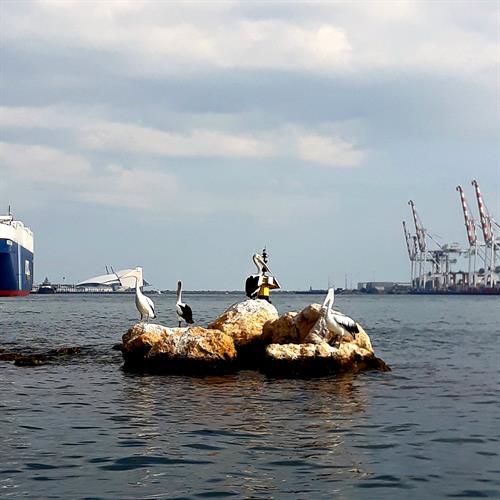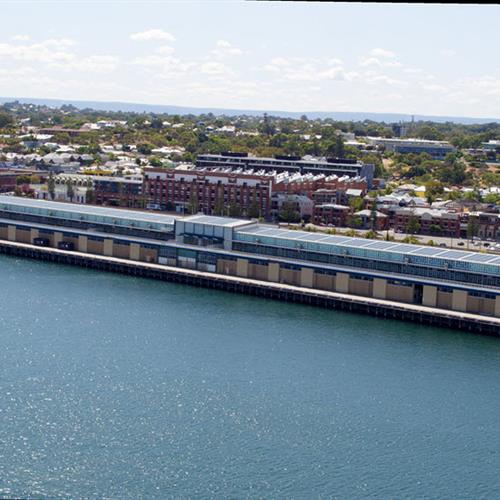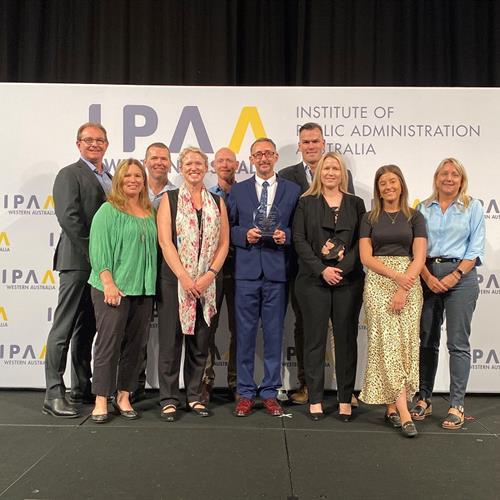Fairy Tern sanctuary ready for breeding season
-1000.jpg?sfvrsn=c8d6d7e9_0)
Fairy Terns are already circling.
Port Environmental Advisor Adam van der Beeke said the Rous Head sanctuary, created by Fremantle Ports on reclaimed land in 2013, was the most successful Fairy Tern breeding site in the metropolitan area last summer.
‘We want to ensure this vulnerable bird species has another successful breeding season this summer,’ he said.
‘While this is an exciting time for keen photographers and bird lovers, I’d ask everyone to please respect the sanctuary and not upset the birds.
‘We ask people to please stay behind the fence and don’t climb on the seawall or enter the sanctuary to limit disturbance.’

Researcher Claire Greenwell, whose PhD research is on the Australian Fairy Tern, has been at the sanctuary most mornings recently.
She said Fairy Terns usually arrived for breeding at the Rous Head sanctuary in late November when bait fish were available.
Claire said the sanctuary’s location on reclaimed land was ideal for the terns as it was adjacent to the ocean and fenced to reduce human disturbance.
‘It also critically provides opportunity for proactive pest management, site maintenance and convenient observation for research,’ she said.
‘Access is restricted to vehicles and people, which are a major cause of colony failure on many beaches and near river mouths.
‘The chick production from the sanctuary is a major contributor for the whole south-west migratory population, making this a particularly important site for the species.’
Fairy Terns, which make nests in the shelly sand, are vulnerable to foxes, feral cats, rats and rabbits (which attract foxes).
Fremantle Ports has been operating a comprehensive pest control program in the lead-up to breeding season.
Claire’s research has been aided by Fremantle Ports providing sponsorship for her research project into site establishment requirements, and breeding and feeding ecology of the terns. The outcomes of this research will be used to guide management programs for the species in the future.
Natural breeding sites can be very unstable as they are exposed to natural disturbances, for example, storm inundation, and human disturbances leading to frequent breeding failure.
The Rous Head sanctuary has been successful in helping to alleviate some of the pressures that frequently contribute to colony failure.
Claire’s research is supporting a broader Australian Bird and Bat Banding Scheme (ABBBS) project being led by the Conservation Council of Western Australia (CCWA).
Background
Watch the video about the 2018-19 breeding season
The Rous Head Fairy Tern Sanctuary, established by Fremantle Ports at Rous Head, North Fremantle in 2013 is an ongoing voluntary project on reclaimed land comprising design, construction and operation of a managed conservation area for a listed threatened bird species, the Australian Fairy Tern.
The sanctuary was the most successful breeding site for Fairy Terns in the Perth metropolitan area for the past few years. Since the area was constructed, the adult breeding population has grown from 90 adult pairs in 2013-14 to 250 adult pairs in 2017-18 and 220 pairs in 2018-19.
Prior to the creation of the area, Fairy Terns attempted breeding at the port in pairs or small groups. Eggs were laid in shallow sand scrapes and vulnerable to destruction from humans, dogs or vehicles.
The success of the conservation area is due to its location and design, based on advice from Australian conservation authorities and particularly the Western Australian Museum. The site was elevated and located with direct ocean access where Fairy Tern prey (bait fish) is abundant and close.
Fremantle Ports engaged with the community and users of the port area to consider site design options and to garner community support for the site. Fremantle Community Men's Shed painted model replicas of the terns that were planted at the site to encourage prospecting terns to land. Birdlife Australia contributed to the development of interpretive signage drawing on its national experience. New signs providing people with further information about Fairy Terns are in place for the upcoming breeding season.
The birds make their nests in a scrape in shelly sand and lay one to two speckled eggs, rarely three, between November and March. Sandy material dredged in the Inner Harbour deepening of 2010 was used to create the breeding conditions favoured by Fairy Terns. The breeding sanctuary is fenced to protect the nesting colony from intrusion and to prevent the chicks from straying onto the adjacent pedestrian and cycle pathway. The site was replenished with shelly material before the 2017-18 breeding season.
In 2016, CCWA received a grant from Fremantle Ports towards establishing a WA Fairy Tern Conservation Network to coordinate the CCWA citizen-science project activities and to facilitate conservation initiatives with land and water managers and community volunteers.
The network page now operates an email group for general communications and a Facebook group to facilitate the submission of citizen-science observations, particularly where these are supported by digital photographs of banded birds, the numbered bands themselves and/or fish being carried for courtship or to feed chicks. Fremantle Ports continues to work closely with the network.
Chicks on site are banded annually as part of CCWA’s Fairy Tern Citizen Science Project to understand more about Fairy Tern population movements, sub-regional relationships and overall population health. The banding is being supervised by Dr Nic Dunlop, a terrestrial and marine ecologist with a special interest in seabird population dynamics and involves an experienced team of volunteers.
The bird bands are provided by the Australian Government under the auspices of the Australian Bird and Bat Banding Scheme (ABBBS). The ABBBS manages collection of information on threatened and migratory bird and bat species and has issued authority to Dr Dunlop to supervise the banding at the sanctuary.
See the amazing photos research Claire Greenwell took at the Rous Head Fairy Tern sanctuary during last summer's breeding season:
Find out how you can explore the port or get ferry and cruise info...

.jpg?sfvrsn=106a8f4e_2)
.jpg?sfvrsn=99845b49_2)
.jpg?sfvrsn=9d56f069_2)
.jpg?sfvrsn=8c7cb2d9_2)
.jpg?sfvrsn=b54fc426_2)
.jpg?sfvrsn=88595872_2)
.jpg?sfvrsn=23392970_2)
.jpg?sfvrsn=443982a4_2)
.jpg?sfvrsn=cbc20f4f_2)
.jpg?sfvrsn=838023cf_2)
.jpg?sfvrsn=fb31dfe2_2)
.jpg?sfvrsn=38ce374f_2)
.jpg?sfvrsn=83104e9f_2)
.jpg?sfvrsn=d9ce8e1_2)
.jpg?sfvrsn=d91a39ec_2)
.jpg?sfvrsn=f03dd3bb_2)
.jpg?sfvrsn=54066d7_2)
.jpg?sfvrsn=6018e614_2)
.jpg?sfvrsn=7a6c8806_2)
.jpg?sfvrsn=d39db7f7_2)
.tmb-card500.jpg?Culture=en&sfvrsn=2cfe3b7f_1)


